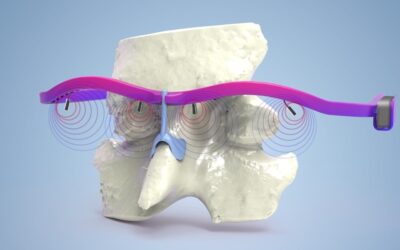Advanced Engineering Materials has been bringing you the latest breakthroughs in structural materials that are making those important first steps towards commercialization since 1999. With its further increased, record-high Impact Factor of 2.319 (2017 Journal Citation Reports), the journal covers a variety of key topics, such as composites, ceramics, intermetallics, and coatings, and also high-temperature, cellular, and biomedical materials, with a strong focus on new manufacturing techniques.
No access to our published content? Make sure to recommend Advanced Engineering Materials to your librarian. More information can be found here.
In this monthly feature, we highlight the research behind the artwork on the covers of the most recent issue of Advanced Engineering Materials, as well some of the most read Advanced Engineering Materials publications over the last month. The cover contributions and these top-downloaded articles are therefore currently freely accessible! Click on the titles below to get to the corresponding papers. You can find this month’s issue here. Also check out our previous Engineering Digest here.
by Simon Frølich, James C. Weaver, Mason N. Dean, and Henrik Birkedal
By integrating parametric modeling with multi-material 3D printing, Henrik Birkedal from Aarhus University, James Weaver from Harvard University and their co-workers describe an effective approach to identify design elements that are critical for mechanical performance in multi-phase biological composites. The cover image demonstrates one such example, with the background photograph of a transparent 3D-printed nacre structural analogue overlaid with a color SEM image of its fracture surface.
A more extensive news article about this study can be found here.
The Effect of Pressure Stress on the Evolution of B2(ω) Phase in High Nb Containing TiAl Alloy
Effect of Pressure Stress on the Evolution of B2(ω) Phase in High Nb Containing TiAl Alloy
by Bei Cao, Jieren Yang, Xuyang Wang, and Rui Hu
The B2(ω) phase in TiAl alloys is unstable at evaluated temperatures and under complex stresses, as reported here by Jieren Yang and co-workers from Northwestern Polytechnical University in Xi’an, China. B2 → ω and ω → B2 transitions can occur by influence of both temperature and stress. The mechanism enabling these reversible transitions involves the collapse of an atomic layer in the B2 phase, while the ω phase can transfer to the B2 phase at higher temperatures. Additional pressure plays a positive role in the B2 → ω transition, while the ω → B2 transition is suppressed under external pressure.
by Panagiotis Polygerinos, Nikolaus Correll, Stephen A. Morin, Bobak Mosadegh, Cagdas Onal, Kirstin Petersen, Matteo Cianchetti, Michael T. Tolley, and Robert Shepherd
Both metals and plastics are used frequently in robot designs, resulting in extrinsically soft robotics. However, organic elastomer-based robots with elastic moduli in the kPa-MPa range are intrinsically soft, and always compliant independent of their shape. Such materials therefore can be used to reduce control complexity and manufacturing costs, while enabling sophisticated functionalities in direct human contact. Robert Shepherd at Cornell University presents here together with eight colleagues in the field a comprehensive review of materials, design, and manufacturing of fluidically pressurized intrinsically soft robotics, while setting a historical context for their development. They also discuss human applications and speculate on future compositions and use cases.
Advanced Structural Materials by Bioinspiration
by Flavia Libonati and Markus J. Buehler
In structural design, there is a crucial need for damage-tolerant materials to provide a good strength-toughness balance. However, these two properties are mutually exclusive in many engineering materials. Drawing inspiration from nature can be a promising strategy to fabricate advanced structural materials. This review by Markus Buehler and Flavia Libonati at Massachusetts Institute of Technology summarizes key examples of biological structural materials, common design motifs and mechanisms found in them, bioinspiration approaches to engineering as well as recent successful case studies. A critical discussion includes the limitations of the current techniques, and highlights future challenges in the bioinspired design of novel materials for engineering applications.
A more extensive news article about this study can be found here.
A Microvascular System for the Autonomous Regeneration of Large Scale Damage in Polymeric Coatings
by Ryan C. R. Gergely, Michael N. Rossol, Sharon Tsubaki, Jonathan Wang, Nancy R. Sottos, and Scott R. White
Coatings are critical for the protection of engineered structures in harsh operating environments. Self-healing coatings have been developed to mitigate the effects of damage while extending service life. However, self-healing materials typically are limited to the specific length scale they address as well as their ability to respond to multiple damage events and to control the volume of healing fluids. Scott White et al. at the University of Illinois at Urbana-Champaign now have begun to address these persistent challenges. A novel design for healing agent storage and release is introduced, which allows for complete regeneration of a coating with precise and autonomous control of the coating thickness.
A more extensive news article about this study can be found here.


 Nature’s Design Strategies through Parametric Modeling, Multi-Material 3D Printing, and Mechanical Testing
Nature’s Design Strategies through Parametric Modeling, Multi-Material 3D Printing, and Mechanical Testing











